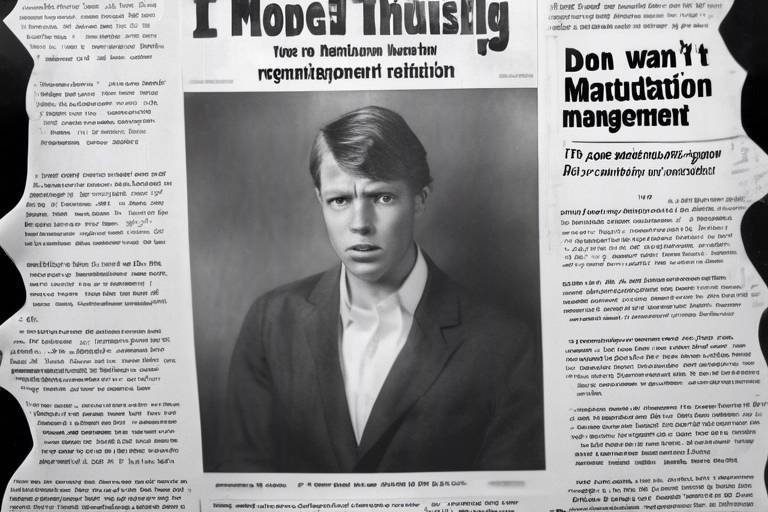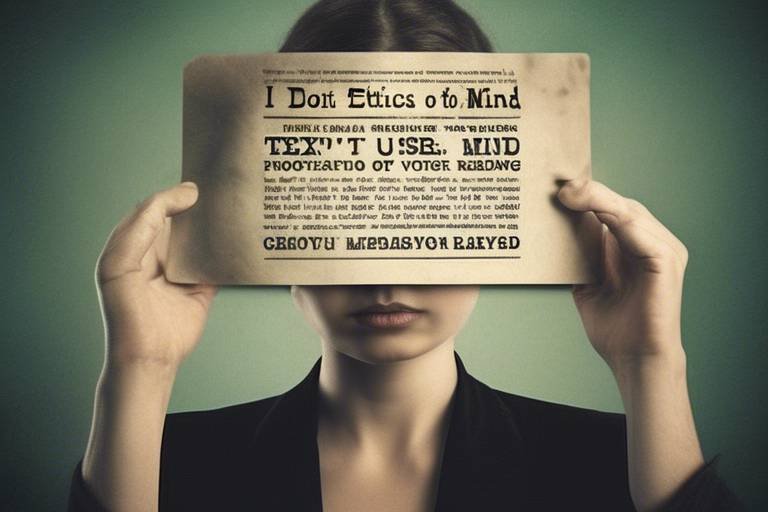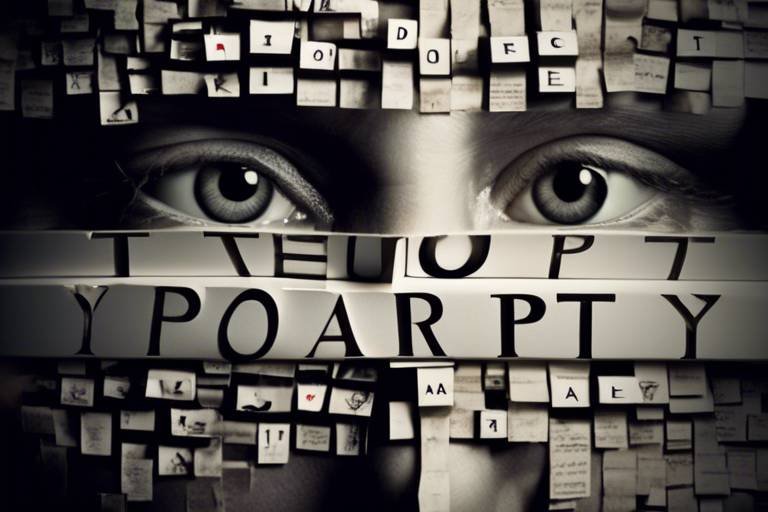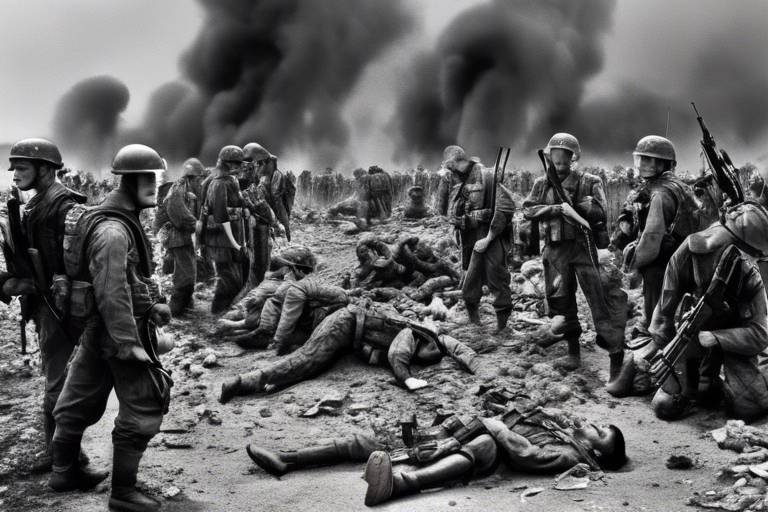Unveiling the Ethics of Aggression
Aggression is a term that conjures up a myriad of emotions and thoughts. It’s a concept deeply embedded in the human experience, and its implications stretch far beyond mere physical confrontations. When we think about aggression, we often picture heated arguments, violent outbursts, or even wars. However, the reality is much more nuanced. This article explores the complex moral implications of aggression, examining its psychological, social, and philosophical dimensions, as well as its impact on individuals and society as a whole.
The ethics surrounding aggression are not only about determining right from wrong; they delve into the very essence of human nature. Why do people become aggressive? Is it a learned behavior, or is it part of our biological makeup? These questions are not just academic; they resonate in our everyday lives, influencing our interactions and societal norms. Understanding the ethical dimensions of aggression requires us to look at it through various lenses—psychological, historical, and philosophical. Each perspective offers unique insights that can help us navigate the murky waters of human behavior.
Moreover, aggression is not merely a personal issue; it has profound implications for society. It shapes our laws, influences our cultures, and can even dictate our relationships. The way we respond to aggression, whether through condemnation or justification, reflects our collective values and ethical frameworks. As we journey through this exploration, we will uncover how aggression manifests in different contexts and what that means for us as individuals and as a society. Are we merely products of our environment, or do we have the agency to choose how we respond to aggression?
In this article, we will dissect the nature of aggression, delve into historical perspectives, and explore various philosophical theories that attempt to make sense of this complex behavior. We’ll also look at the psychological factors that contribute to aggression and the social implications it has on relationships and communities. Finally, we’ll examine the role of media in shaping perceptions of aggression, highlighting how entertainment and news coverage can influence societal attitudes. By the end of this exploration, we hope to provide a comprehensive understanding of aggression and its ethical implications, sparking thoughtful discussions about how we can better navigate this aspect of human behavior.
- What is aggression? Aggression refers to behaviors that can cause harm or pain to others, either physically or psychologically.
- Is aggression always negative? While aggression is often viewed negatively, it can also serve protective or assertive functions in certain contexts.
- How does media influence aggression? Media portrayals can normalize aggressive behavior and shape public perceptions, often leading to increased acceptance of violence.
- Can aggression be controlled? Yes, through various interventions such as therapy, education, and community programs, aggressive behaviors can be managed and reduced.

The Nature of Aggression
Understanding aggression requires us to peel back the layers of human behavior and explore the intricate psychological roots that drive individuals to act out in hostile ways. At its core, aggression is not merely an impulsive reaction; it embodies a spectrum of behaviors that range from subtle hostility to outright violence. This complexity can be categorized into several forms, including physical aggression, where harm is inflicted on others, and verbal aggression, which involves the use of words to hurt or intimidate. Each type carries its own implications for human interaction and societal norms.
To further grasp the essence of aggression, we can identify several key manifestations:
- Reactive Aggression: This occurs as an immediate response to a perceived threat or provocation. Imagine a dog barking defensively when it feels cornered; similarly, humans often react aggressively when they feel their safety is jeopardized.
- Proactive Aggression: In contrast, this type is premeditated and often used as a means to achieve a specific goal. Think of a bully who intimidates others to gain social status, demonstrating how aggression can be a tool for manipulation.
- Instrumental Aggression: This form is characterized by behavior aimed at achieving a desired outcome, such as stealing or coercing. It's not driven by emotion but rather by a calculated decision to fulfill a need.
Each of these forms of aggression can manifest in various contexts, from personal relationships to broader societal interactions. For instance, in a workplace setting, a colleague may exhibit verbal aggression through constant criticism, leading to a toxic environment. On a larger scale, societal aggression can be seen in acts of violence during protests or riots, where individuals feel justified in their actions due to perceived injustices.
Moreover, the psychological underpinnings of aggression are influenced by a myriad of factors, including biological predispositions, environmental triggers, and social learning. Research has shown that certain personality traits, such as high levels of hostility or narcissism, can predispose individuals to aggressive behavior. Additionally, environments that normalize violence, like those depicted in some media forms, can reinforce aggressive tendencies, creating a vicious cycle that perpetuates hostility.
Ultimately, aggression is a multifaceted phenomenon that reflects deeper psychological and social dynamics. Understanding its nature is crucial for addressing the behaviors that disrupt individual lives and societal harmony. By dissecting the types and triggers of aggression, we can begin to foster a more peaceful coexistence, encouraging empathy and communication over hostility.
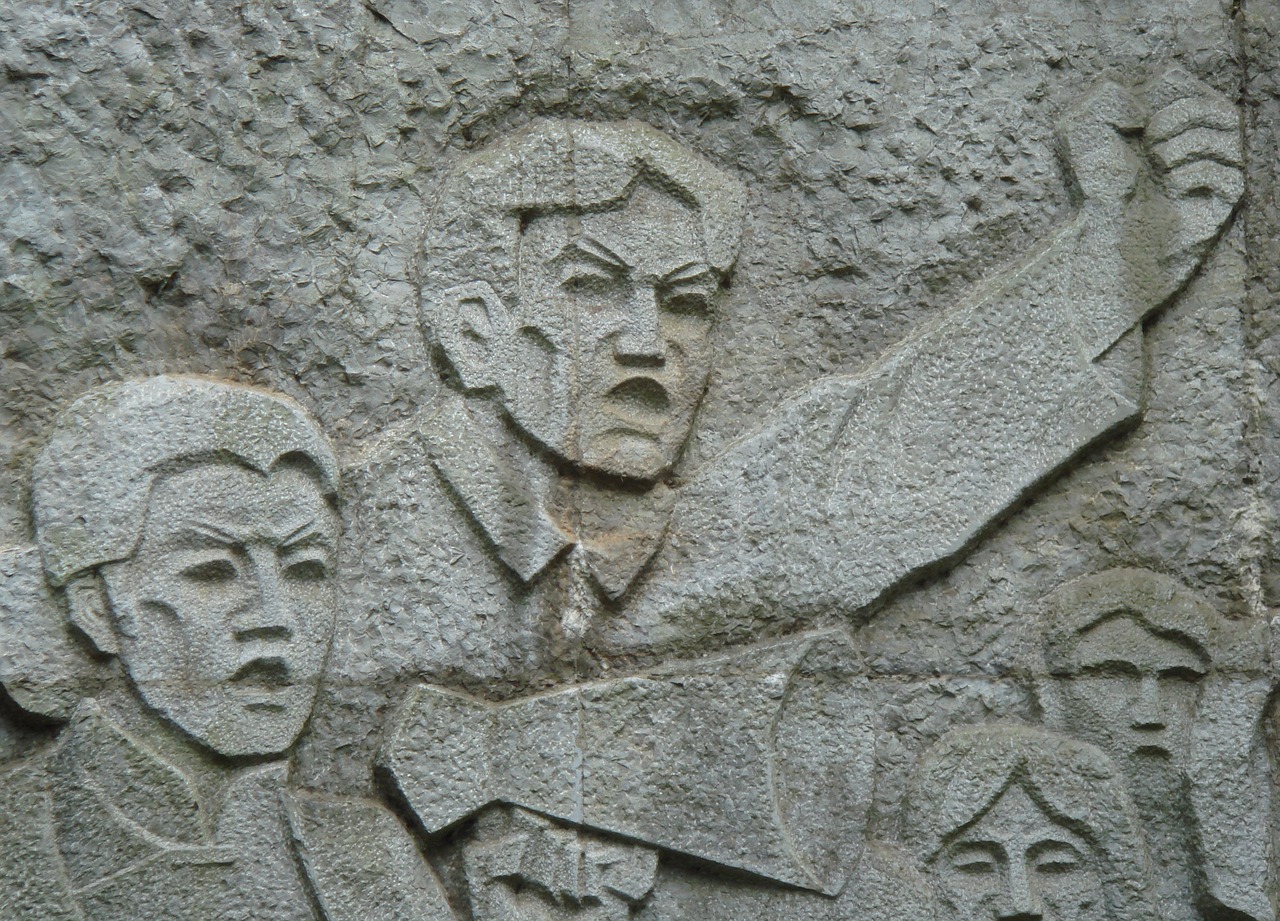
Historical Perspectives on Aggression
Throughout the ages, aggression has woven itself into the very fabric of human history. From ancient civilizations to modern societies, the perception and response to aggressive behavior have evolved dramatically. In many cultures, aggression was often seen as a necessary tool for survival, a means to assert dominance, or a way to protect one's territory. For instance, tribal societies frequently engaged in warfare, not just as a method of conflict resolution but also as a rite of passage. This historical lens allows us to explore how aggression has been justified, condemned, and ritualized across different epochs.
In ancient Rome, aggression was glorified in the context of military conquests. The Romans believed that their expansion was a divine mandate, viewing their aggressive actions as a means to civilize and bring order to the 'barbaric' lands. This notion of 'just aggression' was prevalent, as society often celebrated warriors and their conquests. However, as we moved into the Middle Ages, the perception of aggression shifted. The rise of chivalry emphasized honor and loyalty, and aggressive acts were often framed within the context of noble causes, such as defending the faith or protecting the realm.
As we transitioned into the Enlightenment period, philosophical thought began to challenge the glorification of aggression. Thinkers like Hobbes and Rousseau debated the nature of man and society, questioning whether aggression was an inherent trait or a product of societal structures. This period marked a significant shift, as the focus moved from glorifying aggression to understanding its roots and implications. The concept of the 'noble savage' emerged, suggesting that humans were inherently good but corrupted by civilization, which often bred aggressive tendencies.
In the 20th century, the understanding of aggression took on a more psychological dimension. The world wars brought unprecedented levels of violence and destruction, prompting scholars to analyze the psychological factors behind such behavior. Theories emerged that sought to explain aggression as a response to frustration, social learning, or even biological predisposition. The infamous Stanford prison experiment highlighted how situational factors could lead to aggressive behavior, revealing that aggression is not just a personal trait but also a product of context.
Today, we stand at a crossroads in understanding aggression. While historical perspectives provide a rich tapestry of insights, contemporary discussions often focus on the implications of aggression in social media, political discourse, and community interactions. As we reflect on these historical narratives, we are compelled to ask: How have our historical understandings of aggression shaped our current societal norms? And as we navigate a world increasingly influenced by technology and media, what lessons can we draw from the past to address aggression in the present?
- What are the historical roots of aggression in human societies? Aggression has been a part of human history for millennia, often seen as a means of survival, dominance, or defense.
- How did ancient cultures perceive aggression? Many ancient cultures, such as the Romans, often glorified aggression as a necessary tool for expansion and civilization.
- What philosophical shifts have influenced our understanding of aggression? The Enlightenment period brought significant philosophical discussions that questioned the inherent nature of aggression and its societal implications.
- How has psychological research contributed to our understanding of aggression? Psychological studies have revealed that aggression can stem from frustration, social learning, and situational factors, broadening our understanding beyond mere personality traits.

Philosophical Theories of Aggression
When we dive into the murky waters of aggression, we find ourselves swimming alongside a multitude of philosophical theories that seek to explain its existence and moral implications. At its core, aggression raises profound questions about human nature and ethics. Why do we act aggressively? Is it ever justified? These queries have sparked debates among philosophers for centuries, leading to various perspectives that help us understand the complexities of aggression.
One of the most notable frameworks for discussing aggression is the just war theory, which seeks to determine the moral legitimacy of engaging in war and violent conflict. This theory stipulates that aggression can be justified under certain conditions, such as self-defense or the protection of innocent lives. It presents a dual-layer approach: the jus ad bellum (the right to go to war) and the jus in bello (the right conduct within war). This framework compels us to evaluate not just the reasons for aggression but also the methods employed during conflicts. For instance, can we morally justify the use of drones in warfare if they minimize casualties on our side but potentially harm civilians on the other?
On the flip side, we have deontological ethics, which focuses on the morality of actions themselves rather than their outcomes. This perspective argues that aggression, in any form, is inherently wrong. Immanuel Kant, a prominent figure in this field, posited that actions must adhere to universal moral laws. According to this view, even if an aggressive act could lead to a positive outcome, it remains unethical if it violates moral principles. This raises a compelling question: Are there instances where aggression could be morally permissible, or is it a line we should never cross?
To further illustrate these philosophical debates, consider the following table that contrasts these two approaches:
| Aspect | Utilitarian Views | Deontological Approaches |
|---|---|---|
| Focus | Consequences of actions | Inherent morality of actions |
| Justification of Aggression | Can be justified if it leads to greater good | Generally deemed unjustifiable |
| Key Philosophers | Jeremy Bentham, John Stuart Mill | Immanuel Kant |
Ultimately, the philosophical theories surrounding aggression challenge us to confront uncomfortable truths about our nature. They compel us to ask ourselves: Is aggression an inevitable part of being human, or can we transcend it? As we navigate through these ethical landscapes, we must consider the implications of our actions and their potential to either foster harmony or perpetuate violence.
As we explore the psychological and social dimensions of aggression, the philosophical debates remind us that our understanding of aggression is not merely an academic exercise; it has real-world implications for how we interact with one another and how societies choose to address violence. The discussions surrounding aggression are not just about right and wrong; they are about the very fabric of our existence as social beings.
- What are the main philosophical theories regarding aggression? The primary theories include utilitarianism, which focuses on the outcomes of aggressive actions, and deontological ethics, which emphasizes the morality of the actions themselves.
- Can aggression ever be justified? According to just war theory, aggression may be justified under specific circumstances, such as self-defense.
- How do psychological factors influence aggression? Psychological factors such as personality traits, environmental triggers, and mental health issues play a significant role in shaping aggressive behavior.
- What are the social implications of aggression? Aggression can severely impact relationships and group dynamics, leading to conflicts and altering societal norms.

Utilitarian Views
Utilitarianism, a philosophical framework that prioritizes the greatest happiness for the greatest number, offers a unique lens through which to examine aggression. At its core, this ethical theory evaluates actions based on their consequences. So, when we talk about aggression, we must ask ourselves: does it lead to more happiness or suffering? This question is pivotal as it determines whether aggressive actions can be justified under utilitarian principles.
Imagine a scenario where a person resorts to aggression to defend themselves or others from an imminent threat. From a utilitarian perspective, if this act of aggression prevents greater harm, it could be seen as morally acceptable. However, the challenge lies in predicting the outcomes of such actions. The ripple effect of aggression can lead to unintended consequences that may outweigh the immediate benefits. For example, a single aggressive act could escalate into a larger conflict, causing widespread suffering rather than alleviating it.
Utilitarian views also prompt us to consider the context of aggression. For instance, in a situation where a community is under threat from an external force, collective aggression may be justified if it serves to protect the majority. Yet, this raises ethical dilemmas about individual rights. Is it acceptable to sacrifice the well-being of a few for the happiness of many? This question highlights the tension within utilitarianism itself, as it often grapples with balancing individual rights against collective outcomes.
Moreover, the assessment of aggression through a utilitarian lens is not just about immediate effects; it also involves long-term implications. A society that condones aggressive behavior may foster a culture of violence, leading to increased anxiety and fear among its members. Over time, this could diminish overall happiness, contradicting the very essence of utilitarianism. Thus, while aggression might yield short-term benefits in certain scenarios, the broader consequences must be carefully evaluated.
To illustrate these points, consider the following table that summarizes key considerations in utilitarian views on aggression:
| Consideration | Positive Outcome | Negative Outcome |
|---|---|---|
| Self-defense | Protection of life | Escalation of violence |
| Collective action | Community safety | Violation of individual rights |
| Cultural acceptance | Short-term security | Long-term societal fear |
In conclusion, utilitarian views on aggression compel us to weigh the benefits against the potential for harm. While aggression can sometimes lead to greater good, it is essential to remain vigilant about its broader implications. The challenge lies in navigating these ethical waters, ensuring that our actions align with the ultimate goal of enhancing overall happiness.
- What is utilitarianism? Utilitarianism is a philosophical theory that suggests the best action is the one that maximizes overall happiness or well-being.
- Can aggression ever be justified? Yes, under utilitarianism, aggression may be justified if it leads to a greater good or prevents significant harm.
- What are the potential consequences of aggressive behavior? Aggressive behavior can lead to both immediate benefits and long-term negative consequences, including escalation of violence and societal fear.
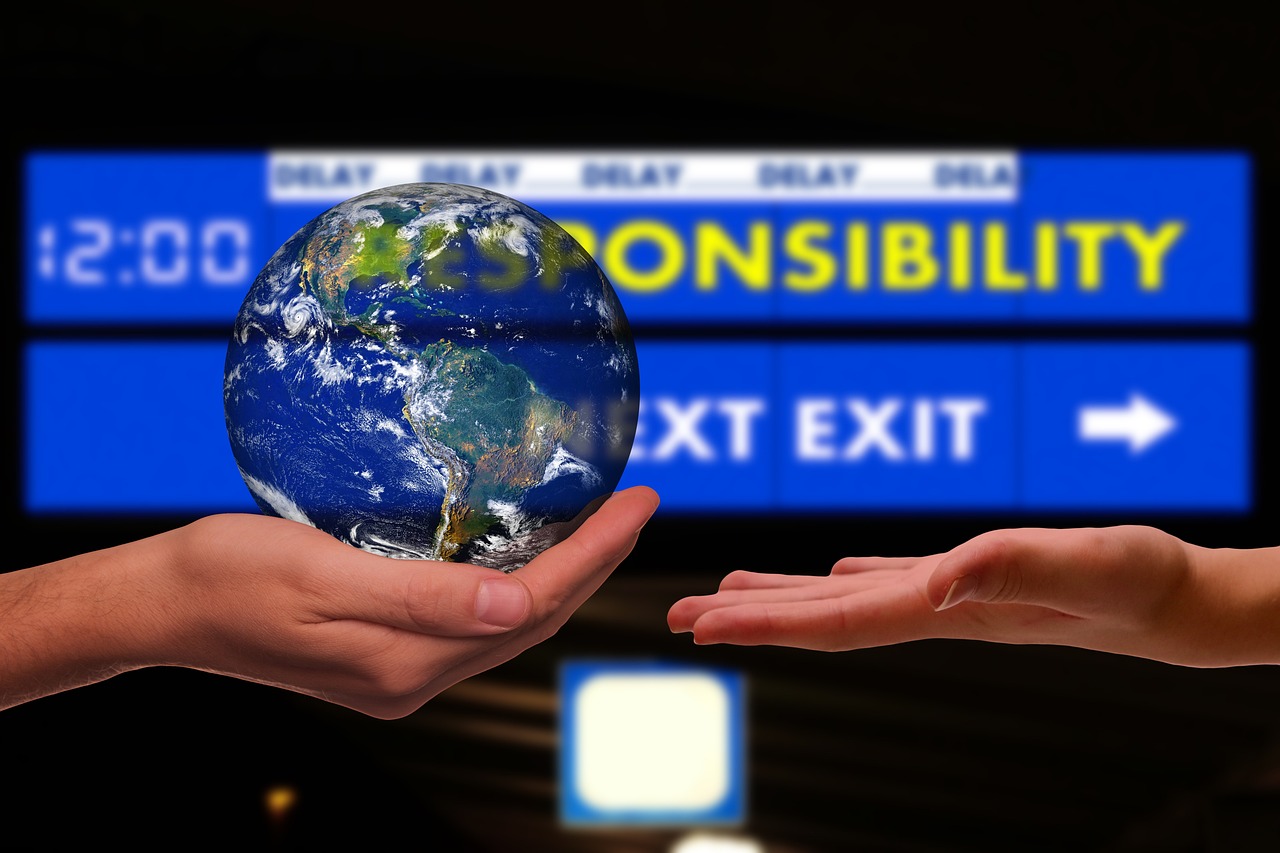
Deontological Approaches
When we delve into the realm of deontological ethics, we find ourselves grappling with a fascinating yet challenging perspective on morality. Unlike utilitarianism, which focuses on the consequences of actions, deontological approaches emphasize the inherent morality of the actions themselves. This means that, from a deontological standpoint, an action can be deemed morally wrong regardless of the outcomes it produces. For instance, if aggression is employed as a means to achieve a particular end, such as protecting oneself or others, a deontologist would argue that the act of aggression itself may still be fundamentally immoral.
One of the most notable figures in deontological ethics is Immanuel Kant. He posited that moral actions must be guided by universal maxims, which are principles that everyone should follow. According to Kant, if an action cannot be universally applied without contradiction, it cannot be considered moral. This leads to a stringent view on aggression; if one were to justify aggressive behavior under certain circumstances, it raises the question: could such justifications be universally accepted? In many cases, the answer is a resounding no.
Moreover, deontological ethics often hinges on the concept of duty. Individuals have moral obligations that must be upheld, regardless of the potential repercussions. This can create a tension between personal safety and moral duty. For example, a bystander witnessing an act of aggression may feel a moral obligation to intervene, even at the risk of their own safety. This sense of duty can lead to complex moral dilemmas where individuals must weigh their responsibilities against the potential for harm.
To illustrate the complexities of deontological approaches to aggression, consider the following scenarios:
| Scenario | Deontological Perspective |
|---|---|
| A soldier is ordered to engage in combat. | While the soldier may be fulfilling a duty, the act of aggression itself raises moral questions about the justification of war. |
| A person defends themselves from an attacker. | Even though self-defense may be seen as justifiable, the act of aggression could still be viewed as morally impermissible. |
| A parent disciplines a child physically. | This action may be deemed unacceptable regardless of the intended outcome, as it violates the inherent rights of the child. |
In conclusion, the deontological approach to aggression invites us to reflect on the moral implications of our actions in a profound way. It challenges us to consider not just the outcomes but the ethical frameworks that guide our behavior. This perspective encourages a deeper understanding of morality, pushing us to question whether the ends can ever truly justify the means. As we navigate the complexities of human behavior, acknowledging the deontological stance on aggression can help illuminate the ethical dilemmas we face in our daily lives.
- What is deontological ethics? Deontological ethics is a moral philosophy that focuses on the morality of actions themselves rather than their consequences.
- Who is a key figure in deontological ethics? Immanuel Kant is one of the most prominent philosophers associated with deontological ethics.
- Can aggression ever be justified from a deontological perspective? Generally, deontological ethics argues that aggression is morally impermissible, regardless of the circumstances.

Psychological Factors Influencing Aggression
Aggression is not just a random outburst; it's a complex behavior influenced by a myriad of psychological factors. Understanding these factors can help us grasp why some individuals may react aggressively in certain situations while others remain calm. One of the primary contributors to aggressive behavior is personality traits. For instance, those with high levels of neuroticism may be more prone to anger and aggression, as they often perceive threats in their environment more readily. Similarly, individuals with a strong need for dominance or control might resort to aggression to assert their power.
Another critical factor is the environmental triggers that can provoke aggressive responses. Stressful situations, such as conflict at home or work, can create a pressure cooker effect, leading to explosive reactions. For example, someone who has had a tough day at work might snap at a loved one over a trivial issue. This phenomenon illustrates how external circumstances can ignite underlying aggressive tendencies.
Moreover, mental health issues play a significant role in shaping aggressive behavior. Conditions such as intermittent explosive disorder or certain personality disorders can predispose individuals to aggressive outbursts. It's essential to recognize that these behaviors often stem from deeper psychological struggles rather than a mere desire to harm others. Understanding this can foster empathy and promote more effective interventions.
In addition to these factors, the social learning theory posits that aggression can be learned through observation and imitation. Children who grow up in environments where aggressive behavior is normalized—whether through family dynamics or media exposure—are more likely to adopt similar behaviors. This leads to a cycle where aggression begets aggression, perpetuating the issue across generations.
To summarize, the psychological factors influencing aggression are multifaceted and interwoven. They include personality traits, environmental stressors, mental health challenges, and learned behaviors. Recognizing and addressing these elements can help us better understand and mitigate aggressive behaviors in ourselves and others.
- What are the main psychological factors that lead to aggression?
Key factors include personality traits like neuroticism, environmental triggers such as stress, mental health issues, and learned behaviors from social environments. - How does stress influence aggressive behavior?
Stressful situations can heighten emotional responses, leading individuals to react aggressively as a way to cope with their frustrations. - Can aggression be treated or managed?
Yes, understanding the underlying psychological factors can help in developing effective strategies for managing aggression, including therapy and intervention programs.

Social Implications of Aggression
Aggression is not just a personal issue; it ripples through the fabric of society, affecting relationships, communities, and even entire cultures. When we think about aggression, we often picture a heated argument or a physical altercation, but its implications stretch far beyond these immediate encounters. The way aggression manifests can significantly shape social structures and influence the dynamics of our interactions. For instance, aggressive behavior can lead to a breakdown in trust, making it difficult for individuals to connect and collaborate effectively. Imagine a workplace where colleagues are constantly at odds; productivity plummets, and the atmosphere becomes toxic. This is the reality of unchecked aggression in social settings.
Moreover, aggression often breeds a cycle of retaliation. When one party acts aggressively, the response is frequently more aggression, leading to an escalating conflict that can engulf entire communities. This cycle can be seen in various contexts, from family disputes to international relations. The question arises: how do we break this cycle? Understanding the social implications of aggression can help us develop strategies to foster a more peaceful coexistence. For example, promoting communication and conflict resolution skills can mitigate aggressive tendencies and encourage healthier interactions.
In terms of community responses, societies have developed various methods to address and manage aggression. Legal frameworks, such as laws against assault and harassment, serve as deterrents. Additionally, social interventions, like community programs aimed at conflict resolution, play a critical role in addressing aggressive behavior before it escalates. These programs often focus on educating individuals about the consequences of aggression and providing them with tools to express their feelings in constructive ways. The table below highlights some common community responses to aggression:
| Response Type | Description |
|---|---|
| Legal Interventions | Laws and regulations designed to penalize aggressive behavior. |
| Educational Programs | Workshops and seminars that teach conflict resolution and communication skills. |
| Mediation Services | Facilitated discussions aimed at resolving disputes amicably. |
| Community Outreach | Initiatives aimed at raising awareness about the effects of aggression and promoting peaceful interactions. |
Furthermore, aggression can alter societal norms. In communities where aggressive behavior is tolerated or even glorified, such as in certain media portrayals, the acceptance of violence can become ingrained in the culture. This acceptance can lead to a desensitization towards aggression, making it seem like a normal part of life rather than an issue that needs to be addressed. The role of media in shaping these perceptions cannot be overstated, as it often serves as a mirror reflecting societal values and, at times, distorting them.
Ultimately, addressing the social implications of aggression requires a comprehensive approach that involves individuals, communities, and institutions. By fostering open dialogues about aggression and its effects, we can work towards creating a society that values empathy and understanding over hostility. It’s about building bridges instead of walls, and recognizing that while aggression may be a part of human nature, it doesn’t have to define our interactions.
- What are the main causes of aggression in society?
Aggression can stem from various factors, including environmental triggers, personal experiences, and societal norms that condone violent behavior. - How can communities reduce aggressive behavior?
Communities can implement educational programs, promote conflict resolution skills, and create safe spaces for dialogue to help reduce aggression. - What role does media play in influencing aggression?
Media can shape perceptions of aggression by normalizing violent behavior or portraying it in a sensationalized manner, which can affect public attitudes.

Impact on Relationships
When we talk about aggression, it’s crucial to understand how it ripples through our personal and professional relationships. Aggressive behavior can act like a storm, sweeping through the calm of our interactions and leaving chaos in its wake. Whether it’s a heated argument with a friend or a tense moment in the workplace, aggression can create barriers that are often hard to break down. The emotional fallout can lead to a breakdown of trust, communication, and collaboration, which are the bedrock of any healthy relationship.
Imagine having a close friend who suddenly lashes out at you over a trivial matter. It’s not just the words that hurt; it’s the betrayal of trust that follows. You start to question not only their intentions but also the entire foundation of your friendship. This is the essence of how aggression can erode relationships. It creates a cycle where one act of aggression leads to defensive responses, further escalating the conflict.
Moreover, the impact of aggression is not limited to personal relationships; it extends into the workplace as well. In a professional setting, aggressive behavior can manifest as bullying or hostile communication, which can create a toxic work environment. Employees may feel anxious, unmotivated, or even fearful of expressing their thoughts. This can lead to a lack of collaboration and innovation, ultimately affecting the organization's productivity. For instance, a study might reveal that teams with higher instances of aggressive interactions report lower levels of job satisfaction and engagement.
To illustrate this point, consider the following table that highlights the differences in workplace dynamics influenced by aggression:
| Aspect | High Aggression Environment | Low Aggression Environment |
|---|---|---|
| Trust | Low | High |
| Communication | Defensive, Infrequent | Open, Frequent |
| Collaboration | Minimal | High |
| Job Satisfaction | Low | High |
In personal relationships, the consequences of aggression can be equally devastating. Consider a romantic relationship where one partner exhibits aggressive behavior. This can lead to feelings of fear and resentment, causing the other partner to withdraw emotionally. Over time, this withdrawal can turn into a chasm, making it increasingly difficult to reconnect. The initial spark of love can easily turn into a battlefield of misunderstandings and hurt feelings.
Ultimately, the impact of aggression on relationships is profound. It’s like a double-edged sword; while it may seem like a way to assert control or express frustration, the long-term effects can lead to isolation and loneliness. Understanding this dynamic is essential for anyone looking to foster healthier relationships, whether in personal life or at work. By recognizing the signs of aggression and addressing them head-on, individuals can work towards creating an environment where trust and collaboration flourish.
- What are the signs of aggressive behavior in relationships? Look for patterns of yelling, sarcasm, or dismissive comments, as these can indicate underlying aggression.
- How can one manage aggression in a relationship? Open communication, seeking professional help, and practicing empathy can be effective strategies.
- Is aggression ever justified? While some argue that aggression can be justified in self-defense, it's essential to consider the long-term implications on relationships.

Community and Societal Responses
When it comes to addressing aggression, communities and societies are not just passive observers; they play a crucial role in shaping responses that can either exacerbate or alleviate the issue. The way a society reacts to aggressive behavior can significantly influence the overall climate of safety and trust within that community. In many cases, these responses are multifaceted, combining legal frameworks, social initiatives, and community engagement to tackle the root causes of aggression.
One of the primary methods communities utilize to respond to aggression is through legal interventions. Laws and regulations are established to deter aggressive behaviors, such as violence and harassment. For instance, many societies have enacted strict laws against domestic violence, recognizing its devastating impact not only on individuals but also on families and communities at large. These laws serve as a deterrent and provide victims with a means of protection. However, the effectiveness of these legal frameworks often depends on their enforcement and the societal attitudes towards aggression.
In addition to legal measures, social interventions play a vital role in addressing aggression. Community programs aimed at conflict resolution, anger management, and emotional intelligence training can help individuals learn healthier ways to express their emotions. For example, schools often implement anti-bullying campaigns designed to cultivate a culture of respect and empathy among students. These initiatives not only address aggressive behavior but also promote a sense of community and belonging, which can be crucial in reducing instances of aggression.
Moreover, community engagement is essential in creating a supportive environment where individuals feel safe to report aggressive behaviors and seek help. Neighborhood watch programs and community policing initiatives encourage residents to collaborate with law enforcement, fostering a sense of shared responsibility for community safety. This collective approach can significantly reduce fear and anxiety surrounding aggression, allowing individuals to feel empowered rather than isolated.
However, it's important to recognize that responses to aggression can vary widely across different cultures and societies. Some communities may prioritize rehabilitation and restorative justice, focusing on healing for both the victim and the aggressor, while others may lean towards punitive measures. Understanding these diverse perspectives is crucial in developing effective strategies tailored to the specific needs of each community.
In summary, community and societal responses to aggression are complex and require a holistic approach. By integrating legal, social, and community-based strategies, societies can work towards not only mitigating aggressive behaviors but also fostering a culture of understanding and support. The challenge lies in balancing these different responses to create an environment where aggression is neither tolerated nor normalized.
- What are some common legal responses to aggression? Communities often implement laws against violent behavior, harassment, and domestic violence to deter aggressive actions and protect victims.
- How do social interventions help reduce aggression? Social programs, such as anger management and conflict resolution workshops, teach individuals healthier ways to manage their emotions and resolve disputes.
- Why is community engagement important in addressing aggression? Engaging the community fosters a sense of shared responsibility and support, making individuals feel safer and more empowered to address aggressive behaviors.
- How do cultural perspectives influence responses to aggression? Different cultures may prioritize various methods of addressing aggression, such as rehabilitation versus punishment, affecting how communities respond to aggressive behavior.

The Role of Media in Shaping Aggression
In today's fast-paced digital world, the media acts as a powerful lens through which we view and interpret aggression. From the moment we wake up to the time we go to bed, we are bombarded with images, stories, and narratives that shape our understanding of aggressive behavior. But how does this constant exposure to media influence our perceptions and reactions? It's a question worth exploring.
One of the most significant ways media shapes aggression is through its portrayal of violence. Whether it's in blockbuster movies, popular video games, or even the news, aggressive acts are often sensationalized, leading to a skewed perception of reality. For instance, think about the last action movie you watched. How many scenes depicted violence as a solution to conflict? This portrayal can create a societal norm where aggression is viewed as an acceptable response, potentially desensitizing individuals to real-life violence.
Moreover, the impact of media is not limited to entertainment. The news media plays a crucial role in framing stories about aggression, often highlighting sensational cases of violence while neglecting the underlying social issues that contribute to such behavior. This selective reporting can lead to heightened fear and anxiety among the public, creating a perception that aggression is more prevalent than it actually is. When people constantly see reports of violence, it can shape their beliefs about safety and trust in their communities.
To further illustrate this point, consider the following table that outlines the different types of media and their potential effects on perceptions of aggression:
| Type of Media | Potential Effects on Aggression |
|---|---|
| Movies | Normalizes violence as a conflict resolution method |
| Video Games | Can desensitize players to real-life aggression |
| News Media | Creates fear and anxiety through sensationalism |
| Social Media | Amplifies aggressive behavior through online interactions |
In addition to traditional forms of media, social media platforms have emerged as a significant space for the expression of aggression. The anonymity provided by these platforms often emboldens individuals to engage in aggressive behavior, such as cyberbullying or trolling. This not only affects the victims but also creates a culture where aggression is normalized and even celebrated in some circles. It's a digital battleground where words can cut deeper than swords, raising questions about the long-term impact on societal norms and individual behavior.
So, what can be done to mitigate the influence of media on aggression? Awareness is key. By understanding how media shapes our perceptions, we can become more critical consumers of content. Engaging in discussions about the portrayal of aggression in media can also foster a more nuanced understanding, promoting empathy and reducing the likelihood of desensitization. After all, if we want to cultivate a society that values peace and understanding, we must first scrutinize the narratives we consume and share.
- How does media violence affect children? Studies suggest that exposure to violent media can lead to increased aggression in children, as they may come to view violence as an acceptable way to resolve conflicts.
- Is there a difference between fictional and real-life aggression in media? Yes, while fictional portrayals may not have the same immediate consequences as real-life aggression, they can still influence attitudes and behaviors by normalizing violence.
- What role do parents play in mediating media exposure? Parents can help by monitoring the content their children consume and discussing the themes of aggression and violence in a critical context.
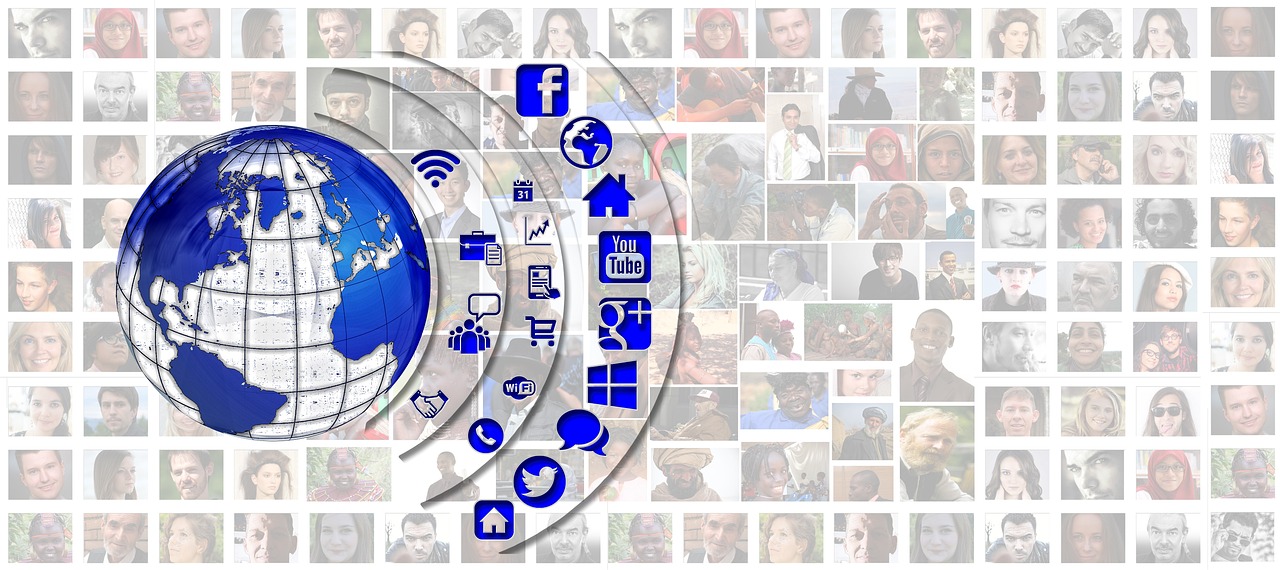
Violence in Entertainment
When we think about , it’s hard to ignore how deeply embedded it is in our culture. From action-packed blockbusters to gritty video games, violent imagery seems to be everywhere. But have you ever stopped to wonder how these portrayals affect us? The truth is, the impact of violent content in movies, television, and video games extends beyond mere entertainment; it shapes our perceptions of aggression and can influence real-life behaviors.
Consider this: when a child watches a superhero save the day through a series of explosive battles, they are not just entertained; they are absorbing lessons about conflict resolution, heroism, and, yes, aggression. This leads to an important question: does exposure to violence in entertainment desensitize us to real-world aggression? Research suggests that repeated exposure to violent media can dull our emotional responses, making acts of aggression seem less shocking and more acceptable.
Moreover, the portrayal of violence in entertainment often glorifies aggressive behavior, presenting it as a viable solution to problems. Characters who resort to violence frequently emerge victorious, leaving audiences with the impression that aggression is not only justifiable but also rewarding. This can create a dangerous cycle where viewers begin to normalize violent responses in their own lives. For instance, a study by the American Psychological Association found that children who consume high amounts of violent media are more likely to exhibit aggressive behavior.
Let's take a closer look at how different forms of entertainment contribute to this phenomenon:
| Type of Media | Impact on Perception |
|---|---|
| Movies | Often glamorize violence, leading to a perception that aggression is heroic. |
| Video Games | Interactive nature may lead to increased desensitization and acceptance of violent behavior. |
| Television Shows | Frequent depictions of violence can normalize aggressive responses in everyday life. |
But it’s not just about the content itself; it’s about how we consume it. The context in which violence is portrayed can significantly alter its impact. For example, when violence is depicted as a means of achieving justice or revenge, it may resonate more strongly with viewers, potentially influencing their own views on conflict resolution. On the other hand, when violence is shown as senseless or leading to negative consequences, it might serve as a cautionary tale, discouraging aggressive behavior.
In the age of social media, where clips from movies and games can be shared in an instant, the potential for influence grows exponentially. Viral videos of violent scenes can reach millions, shaping societal norms and expectations around aggression. As consumers of entertainment, we must be aware of the messages we are absorbing and critically evaluate how these portrayals reflect or distort reality.
In conclusion, while violence in entertainment can provide thrilling experiences, it’s crucial to recognize its potential implications on our perceptions of aggression. As we continue to consume media, let’s strive to engage with it thoughtfully, questioning the narratives we encounter and their effects on our understanding of violence in the real world.
- Does watching violent movies make people more aggressive? Research suggests that repeated exposure to violent media can increase aggressive thoughts and behaviors, especially in children.
- Are all forms of violence in entertainment harmful? Not necessarily. The context and portrayal of violence can influence its impact, with some narratives serving as cautionary tales rather than endorsements of aggression.
- How can parents manage their children's exposure to violent media? Parents can monitor content, encourage discussions about media messages, and promote alternative forms of entertainment that foster positive values.

News Media and Aggression
The portrayal of aggression in news media is a powerful force that shapes public perception and societal attitudes towards violence. When we turn on our television sets or scroll through our news feeds, the images and narratives presented to us can significantly influence how we understand and react to aggressive behavior. For instance, consider how the coverage of violent events often emphasizes sensationalism. Headlines like "Chaos Erupts!" or "Bloodshed on the Streets!" grab our attention but can also skew our perception of reality. Are we really living in a more violent world, or are we just more aware of it because of how it's reported?
One of the most striking aspects of news media is its ability to frame events, creating narratives that can either incite fear or promote understanding. For example, when a violent incident is reported, the media often highlights the perpetrator's background, sometimes leading to stereotypes about certain groups of people. This can foster a culture of fear and mistrust. In contrast, when stories focus on the victims and the broader social issues at play, they can encourage empathy and a desire for change. The question then arises: how responsible is the media for the societal implications of its narratives?
Furthermore, the way news outlets report on aggression can lead to a phenomenon known as the "copycat effect." This occurs when individuals mimic aggressive behaviors they see portrayed in the news. A study conducted by the University of California found that after high-profile violent incidents are reported, there is often a spike in similar incidents. This suggests that the media doesn't just report on aggression; it can also catalyze it. So, what role does the media play in either exacerbating or alleviating aggressive behavior in society?
To better understand the relationship between news media and aggression, let's take a look at a table summarizing key findings from various studies:
| Study | Findings |
|---|---|
| University of California Study | Increased incidents of violence following high-profile news coverage. |
| American Psychological Association | Exposure to violent news can desensitize viewers to real-life aggression. |
| Journal of Communication | Framing of news stories influences public perception of safety and trust in communities. |
The responsibility of the media extends beyond mere reporting; it involves a duty to present information in a way that fosters understanding rather than fear. As consumers of news, we must also be critical of the narratives being presented to us. Are we being informed, or are we being manipulated? This critical lens can help us navigate the complex landscape of information and its impact on our views of aggression.
In conclusion, the relationship between news media and aggression is intricate and multifaceted. The narratives crafted by journalists can either escalate societal fears or promote healing and understanding. As we continue to consume media, it’s vital to remain aware of how these portrayals shape our perceptions and responses to aggression in our communities.
- How does news media influence public perception of aggression? News media can shape perceptions by emphasizing certain narratives and framing events in ways that evoke fear or empathy.
- What is the copycat effect? The copycat effect refers to the phenomenon where individuals mimic aggressive behaviors they see reported in the news, often following high-profile violent incidents.
- What responsibility does the media have in reporting aggression? The media has a responsibility to report accurately and sensitively, considering the potential societal implications of their narratives.
Frequently Asked Questions
- What is aggression?
Aggression is a complex behavior characterized by hostile or violent actions towards others. It can manifest in various forms, including physical violence, verbal attacks, and even passive-aggressive behavior. Understanding aggression requires examining its psychological roots and the social contexts in which it occurs.
- What are the different types of aggression?
There are several types of aggression, including:
- Physical Aggression: Involves harming someone physically, such as hitting or pushing.
- Verbal Aggression: Involves using words to harm someone, like yelling or insulting.
- Relational Aggression: Involves damaging someone's social relationships, often through gossip or exclusion.
Each type has its own implications for behavior and social interactions.
- How has aggression been perceived throughout history?
Aggression has been a part of human history for centuries, often viewed through the lens of cultural norms and values. Different societies have responded to aggressive behavior in various ways, from punishment to social ostracism, reflecting their beliefs about morality and justice.
- What are the philosophical theories related to aggression?
Philosophical perspectives on aggression include:
- Utilitarianism: This theory evaluates the consequences of aggression, asking whether it leads to greater happiness or suffering.
- Deontological Ethics: This approach examines the morality of the action itself, questioning if aggression can ever be justified, regardless of the outcomes.
- What psychological factors contribute to aggressive behavior?
Psychological factors influencing aggression may include personality traits, such as impulsivity or low empathy, as well as environmental triggers like stress or exposure to violence. Mental health issues can also play a significant role in how aggression is expressed.
- How does aggression impact relationships?
Aggression can severely damage personal and professional relationships. It often leads to a breakdown in trust, communication, and collaboration, making it challenging for individuals to maintain healthy interactions.
- What are the societal responses to aggression?
Communities respond to aggression through various means, including legal interventions, social programs, and educational campaigns aimed at promoting non-violent conflict resolution. These responses are crucial for managing and mitigating aggressive behaviors.
- What role does media play in shaping perceptions of aggression?
Media significantly influences societal attitudes towards aggression. Violent content in movies, video games, and news can shape public perceptions, often normalizing aggressive behavior or instilling fear about violence in society.
- How does violent content in entertainment affect viewers?
Exposure to violence in entertainment can lead to desensitization, making viewers more accepting of aggressive behavior in real life. It can also influence their understanding of social norms regarding conflict and aggression.
- How does news media portray aggression?
News media plays a critical role in framing aggression, which can shape public opinion and fear. The way violent incidents are reported can influence how society perceives and reacts to real-world aggression.










